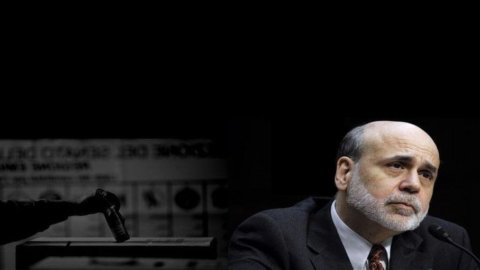A Chief Economist and Senior Macro Strategist from the Natixis Global Asset Management group share their views on when the Fed and other central banks might begin to curb stimulus measures, how those decisions could affect global markets and how rising interest rates will affect investors. When current Fed chairman Ben Bernanke makes a statement, markets listen – and then react. On June 19, Bernanke outlined a program, possibly to be implemented in the second half of the year, for the Fed to downsize the monetary expansion plan, which is currently proceeding at a rate of $85 billion a month, which could end around to mid-2014. The so-called “tapering” could begin if US growth is in line with forecasts. These statements were followed by a hike in government bond interest rates and a sharp correction in global equity markets.
What should we expect from here on out? “The debate on the end of quantitative easing and the decisions of the various central governors will still condition the performance of international markets, causing a certain volatility – says Antonio Bottillo, Managing Director for Italy of Natixis Global Asset Management. It is therefore necessary to look beyond short-term movements and focus on long-term trends. Indeed, with interest rates at historic lows, it appears clear that we are at the beginning of a path of rising interest rates, even if the times and methods cannot be predicted with certainty. The approach to the bond component of portfolios must therefore be rethought and revised on the basis of this perspective, in order to build portfolios capable of navigating through different market phases”.
Philippe Waechter, Chief Economist Natixis Asset Management. According to Waechter, the Fed's decision to reduce its asset purchases (tapering), which came about in its June meetings, should come as no surprise. This maneuver would gradually end the quantitative easing (QE) initiated by the Fed in December 2008 to keep interest rates low and stimulate the economy following the financial crisis. Waechter would not be at all surprised if the exit from expansionary monetary policies already began during the month of September. However, he points out that strategy changes by major central banks are almost always deemed too hasty by markets. Waechter believes the aim of the Fed's announcement is to adopt a two-stage approach in order to avoid the adoption of emergency measures that could weigh unduly on global markets. “During the first phase, in order to cushion the impact of the strategy changes, Bernanke clearly indicated that asset purchases will be reduced, probably starting in the autumn. The purchases will cease when the unemployment rate drops to 7%, i.e. around mid-2014, according to the Fed's forecast. The second phase will begin when the unemployment rate has dropped to 6,5%. At that point the Fed could raise its key short-term interest rate (known as the fed funds rate).”
Overall, Waechter believes that this period of extremely accommodative monetary policy will likely take at least two years to unwind. It goes without saying that the underlying scenario fueling the Fed's new approach is based on the hypothesis of a gradual return of the US economy to a more balanced situation.
The Bank of England announces a possible exit strategy
Following the direction taken by the Fed, in August the Bank of England (BoE) changed its stance in terms of monetary policy in the face of signs of improvement that turned out to be more positive than expected for the United Kingdom, based on various economic indicators . The BoE's philosophy thus approaches that of the Fed: the reduction of the risk of extremely negative events for economic activity must continue pari passu with a gradual abandonment of the exceptionally accommodating monetary policies implemented in recent years. According to the BoE, 2016 will be the deadline for the definitive implementation of the exit from these policies.
In light of the strategy communicated by the Bank of England, it is expected that the European Central Bank (ECB) will in turn define its own exit strategy. “The ECB's September press conference could prove to be more interesting than usual,” adds Waechter.
What are the consequences for the rest of the world?
Over the last few months, the greatest impact has been suffered by emerging countries. “Capital outflows and the weakening of emerging market currencies against the US dollar make these markets all the more fragile,” Waechter said. According to Waechter: "The reversal in the flow of capital that occurs when the Fed changes its position has a significant weight, since these countries - which have developed rapidly in recent years, driven especially by China - are now in a situation economically fragile". Furthermore, there is a risk that the new situation created by the Fed could lead to a decline in trade in emerging countries.
James Balfour, Senior Macro Strategy Analyst Loomis Sayles & Company. According to Balfour, the abandonment of quantitative easing (tapering) has been largely associated with the recent increase in interest rates. “Higher rates will likely affect markets and economic growth, although the impact will differ across countries,” Balfour says. “We expect both the markets and economies of stronger areas to adjust to higher rates rather quickly once rates stabilize. Conversely, countries with more fragile economies, such as many emerging countries, are likely to suffer the most.
Balfour believes that the monetary expansion of recent years has led investors to a constant search for yield, causing an excessive flow of investment into emerging markets. They have also benefited from China's sustained and exceptional growth: over the years, many governments of emerging countries have neglected growth planning with some complacency because times were right. “Many of these countries are now facing inflationary environments at a time when interest rates are rising and foreign demand and investment are evaporating,” adds Balfour. “The adjustment that will follow will be much more difficult to manage for some of these countries than others depending on local conditions. Any more restrictive financial conditions could also have effects on Europe”.
When do you think the Fed will start tapering its bond-buying program?
According to the market, the Fed will ease its purchases in the fourth quarter of 2013 and fully terminate the program by the second quarter of 2014. "We share that perspective," says Balfour. "We expect the 'tapering' to be announced at the next meeting and to continue through mid-2014."
When do you think the Fed will raise short-term interest rates?
Balfour, in this case, does not agree with what has been reported by the market. According to Balfour, "While the market appears to believe that the Fed will hike rates in early 2015, we believe it is more likely that the Fed will do so much later in the year." “We expect growth to pick up slowly and inflation to remain moderate for some time. Furthermore, it seems likely that, regardless of who is appointed to the next Fed presidency, the latter will maintain its current policy, which is to keep interest rates lower than in the past due to low pressures. wages and weak employment growth”.
What impact could rising interest rates have on the bond markets?
According to Balfour, bond markets are currently reacting to the abandonment of expansionary monetary policies, the expectation of higher growth and the change in the leadership of the Fed. “Once the market has assimilated these news, we expect interest rates more closely related to forecasts of economic growth” believes Balfour. “Credit spreads are likely to start tightening once things calm down. Going forward, it will be possible to field new investments with higher returns. The market turbulence has created new investment opportunities around the world”.
What does a rise in interest rates mean for investors?
Balfour believes that a gradual and steady increase in interest rates is an easier phenomenon for economies and markets to assimilate than a sharp increase. “But while the recent hike in US rates has been fairly strong, we believe the recent hike from artificially low levels will not have the same impact as, say, an increase driven by rate hikes aimed at controlling a rise in inflation.” argues Balfour. "In contrast, we see interest rate hikes as driven by higher growth and greater flexibility in the US economy, with little impact on US growth and asset prices."
Looking abroad, a rise in US rates leads to a general rise in interest rates worldwide. In countries where growth is less robust, economic growth and asset prices are most at risk. “This can create opportunities for bond investors as the effects of rising rates are different across economies,” Balfour believes.





